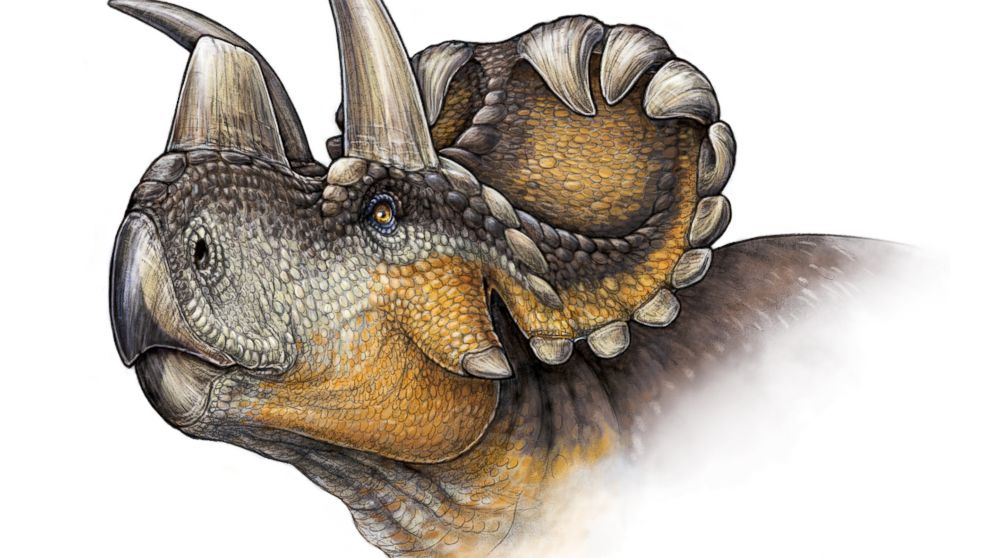Newly-Discovered Wendiceratops Dinosaur Had Crown of Horns
Wendiceratops may help scientists learn about evolution of horned dinosaurs.

— -- Paleontologists are getting a closer look at a newly-discovered horned dinosaur believed to have lived 79 million years ago.
More than 200 bones from nearly all parts of the Wendiceratops' skeleton were discovered in the Pinhorn Provincial Grazing Reserve in Alberta, Canada in 2010.
A new article in the Public Library of Science Journal details what paleontologists learned about the pre-historic creature.
The Wendiceratops -- named in part for fossil hunter Wendy Sloboda -- was 20-feet long and weight around one ton, according to an analysis of the bones, which are believed to have come from four individual dinosaurs.
The Wendiceratops had one horn protruding from its brow and a second from its nose, while it had a crown of curled hornlets at the top of its head, paleontologists said.
It is believed to be one of the oldest known large horned dinosaurs along with the better known Triceratops.
"The number of gnarly frill projections and horns makes it one of the most striking horned dinosaurs ever found," David Evans, curator of vertebrate palaeontology at the Royal Ontario Museum and co-author of the study, said in a statement.
What is most interesting to paleontologists is the nasal horn protruding from the Wendiceratops, as it is believed to be the earliest known time of a tall nose horn, giving paleontologists a clearer look at how it evolved among both the Wendiceratops' branch and that of the similarly horned Triceratops.
It's believed the male dinosaurs used their two main horns to battle for female attention, according to the study. Despite all this, paleontologists said the dinosaur was a strict herbivore and didn't feast on other animals.
A typical meal for a Wendiceratops, according to the study, would likely have been low-lying plants which it would then slice up with its leaf-shaped teeth before devouring them.




